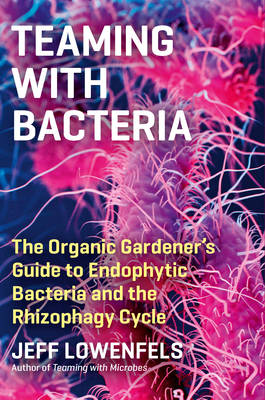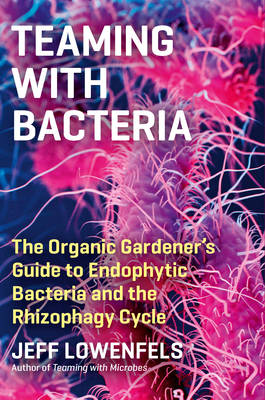
- Retrait gratuit dans votre magasin Club
- 7.000.000 titres dans notre catalogue
- Payer en toute sécurité
- Toujours un magasin près de chez vous
- Retrait gratuit dans votre magasin Club
- 7.000.0000 titres dans notre catalogue
- Payer en toute sécurité
- Toujours un magasin près de chez vous
Teaming with Bacteria
The Organic Gardener's Guide to Endophytic Bacteria and the Rhizophagy Cycle
Jeff LowenfelsDescription
A must-read handbook for organic gardeners and small-scale growers.
Thanks to research conducted over the last few decades, we know that most plants get a significant portion of their nutrients by attracting endophytic bacteria--bacteria that live inside a plant's cells. Through a complex process, plant cells harvest the nitrogen and other nutrients in a bacterium's cell wall and expel the bacterium's protoplasts back into the soil where they rebuild their cell walls, start feeding again, and repeat the cycle. Interesting, you may think, but why does this matter? As it turns out, it matters a lot. The bottom line is this: without endophytic bacteria, plants get fewer nutrients and cannot develop properly.Teaming with Bacteria not only explains the rhizophagy cycle; it shows you how to harness this amazing process to increase productivity and plant health. In addition, endophytic bacteria increase a plant's tolerances to abiotic and biotic stresses and controlling pathogens. This is exactly what we need if we are to deal effectively with climate change, soil loss, and feeding a rapidly burgeoning population. Gardeners, farmers, and other growers must adjust best practices--and develop new ones--to ensure that the rhizophagy cycle can operate at its most efficient pace and that the right endophytic bacteria can do what they are supposed to do.
Just as Teaming with Microbes introduced gardeners and growers to the soil food web, Teaming with Bacteria adds to that science by sharing the latest research on endophytic bacteria (bacteria that live inside plants) and rhizophagy (plants "eating" bacteria)--discoveries that have profound implications for the practices of home gardeners and small-scale growers.Spécifications
Parties prenantes
- Auteur(s) :
- Editeur:
Contenu
- Nombre de pages :
- 172
- Langue:
- Anglais
Caractéristiques
- EAN:
- 9781643261393
- Date de parution :
- 27-09-22
- Format:
- Livre relié
- Format numérique:
- Genaaid
- Dimensions :
- 161 mm x 236 mm
- Poids :
- 544 g

Les avis
Nous publions uniquement les avis qui respectent les conditions requises. Consultez nos conditions pour les avis.






